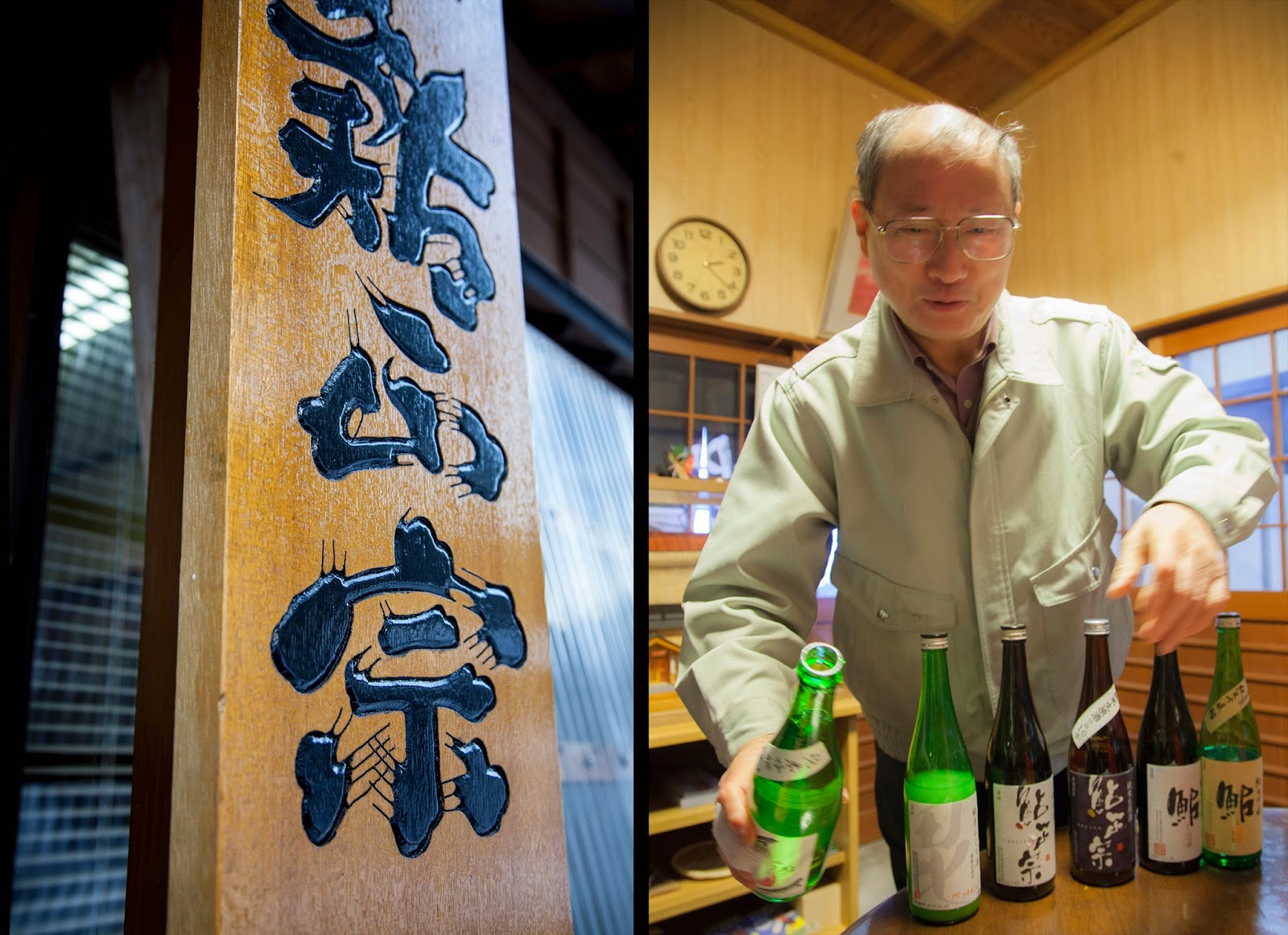Winter is the season for saké brewing and thanks to the kindly producers of Kiminoi and Ayamasamune, I got a firsthand look at the process, and a firsthand taste of the goods.
| Unpolished brown rice will tumble in massive drums, exposing the goods. The dust heads out to pasture. |
 |
| Ayamasamune's mountain spring water flows beneath the brewery. |
Did I mention that saké brewing is really complicated? It is.
So, after some delicate tempering and the addition of koji to about 7% of the rice, booze making is underway. Sort of.
There's your everyday saké, and then there's the good stuff. Some rice is gets the special treatment. Kinda smells like yogurt. It will taste delicious soon enough.
 |
| Kiminoi's Toji (Master Brewer) Hiroshi Hayatsu works the unfiltered brew and modern technology finishes the chore. |
The complicated process continues with a little more elbow grease. Is it time to taste it yet?
I try my hand at yama-oroshi and at last we've got something potable. Woooo... fire water!... but it will be diluted a bit before bottling.
Looked a little milky, right? Well all of those solids get pressed out through this big, long filter thingamajiggy. The juice goes to bottles and the caked rice meal... some of that came home with me. Let me know if you want to try it. Lowers cholesterol, they say.
Speaking of bottling, that's another fascinating story. In Japan, recycling is a buttoned up operation. Large format bottles are standard, even for soy sauce!, so crates of everyone's empties roll in and start their journey all over again.
Naked and sterile, conveyors whisk vessels up, over and around. Maybe this is pretty ordinary stuff, but it makes for some pretty cool visuals, no?
And there you have it. Ready to enjoy. So let's!
At Ayamasamune, the unfiltered nigori was a favorite, but the freshly bottled, unpasteurized namazake truly expressed the freshness of the natural spring waters. I risked the short shelf life to bring a bottle home. Talk about tasting terroir.
It was tough to pick a favorite at Kiminoi. All were beautifully smooth with excellent balance. Do you prefer a fuller, richer mouthfeel or a light, crisp finish? We liked them both, and the ones in between too.
Both family operations, the gentlemen at Kiminoi and Ayumasamune were outstandingly welcoming hosts. I'm sure they would be pleased to show you around too. Thank you!
 |
| A very special thank you to Bill Ross (right) of Dancing Snow. |












